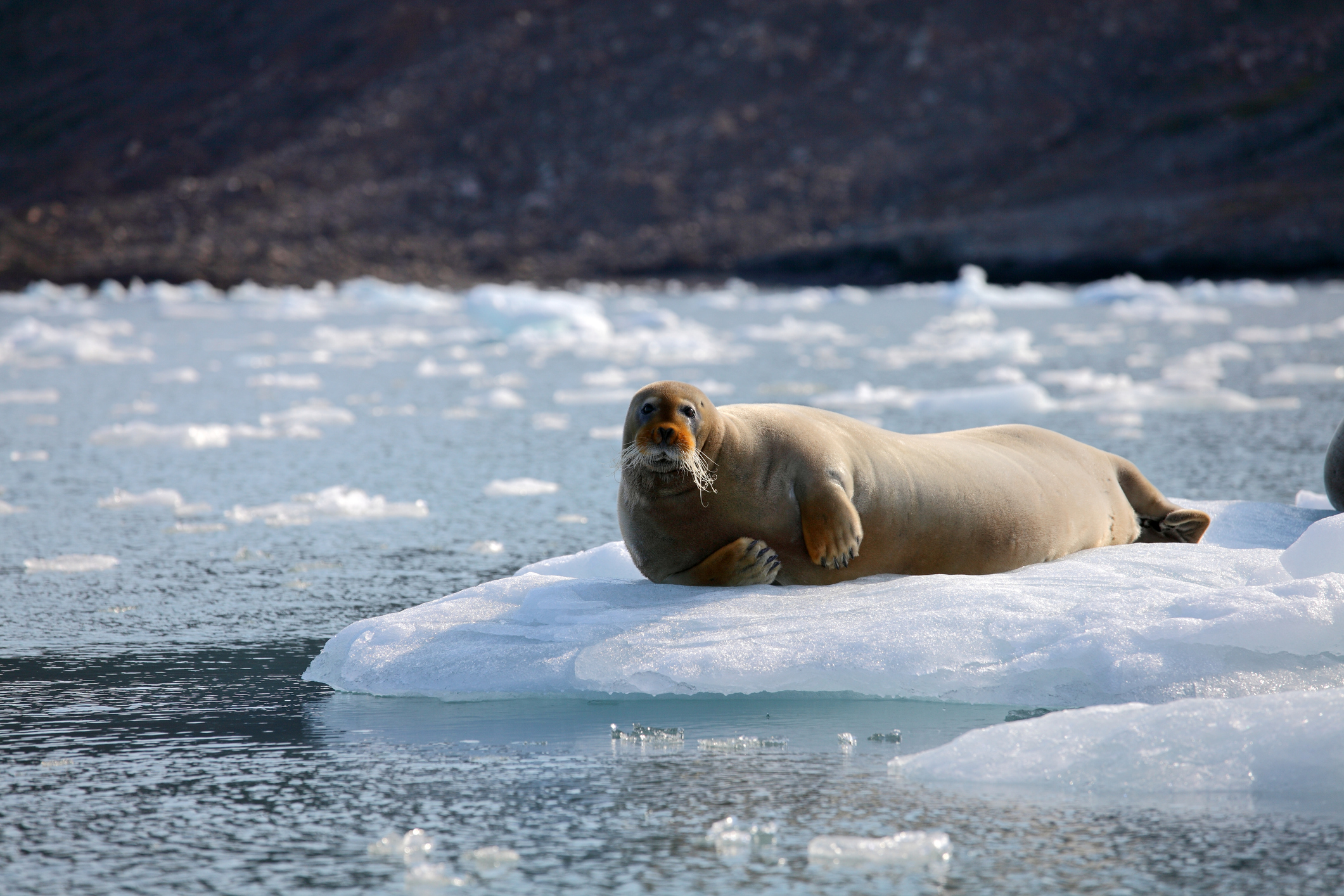
Rowenna Gryba is fascinated by the confluence of statistics and geography. For the past few years her work has focused on Arctic seal populations. Her new study pairs Indigenous Knowledge of seal behaviour near Utqiaġvik, Alaska with satellite telemetry. “If we honor the information that people are willing to share, we’re going to do a better job of conserving these species,” says the UBC PhD student.
How did this study begin?
I worked in the Arctic tagging seals often with Iñupiaq seal hunters. I’d done some analysis showing where seals were foraging or eating and where they were traveling. I was showing this to some of the researchers and hunters that we work with in Utqiaġvik. One of the hunters was like "Oh yeah, that makes sense.’ And I thought: Right, this is new to me, discovering where these seals are foraging, but it definitely wasn’t news to him. That started the thought process of considering how we could include all that information that the hunters have? How can we include that in statistical models?
Previous studies have predominantly used qualitative methods for Indigenous Knowledge documentation. Can you explain how this study is different?
Previous work includes a lot of narrative or quotes from hunters, and it’s hugely valuable, obviously, to have direct wording from the people you’re interviewing. But because what I want to do is integrate this information into a statistical model and pair it with movement data that we already have, I need something a little different. What we did is directly include the number of hunters that have shared that information, then summarize it in a way that would yield the percentage of people that have shared a piece of information. That allows us to understand the frequency with which something might occur. For this study, we talked to nine active seal hunters from Utqiaġvik, seven of whom are included as co-authors in the study – the other two wished to remain anonymous.
How is your statistical work combined with oral knowledge?
Bayesian statistics has something called an informed prior. For example, when we look outside and see clouds, particularly in Vancouver, we know we should probably bring an umbrella. Similarly, with hunters, they have informed priors because they know that ‘Oh, if I go to this place, my grandpa has caught seals here.’ The informed prior influences the data, and it influences your outcome. It’s pairing your previous knowledge with your current data, and those two things combined give a new output. Indigenous Knowledge is this informed prior--it’s information that influences the model and gets paired with the satellite telemetry data, helping us understand movement information for these species.
What are some of the key findings?
The importance of currents, where hunters would have seen different species associated in different areas related to currents, which is the detailed information that we don’t often see in satellite telemetry data. Also, some observations around the impact of wind patterns, which we don’t take into account very often when talking about seal movement. And then of course detailed information about associations with different ice concentrations and ice types, and different terrestrial habitats, like the use of sandbars or different inlets and river mouths.
You obviously believe Indigenous knowledge needs to be bettered integrated into our scientific models.
We’re ignoring information that is gathered over generations. It’s information that we don’t capture in typical surveys or satellite telemetry data. I wouldn’t be able to write this paper without the knowledge holders sharing their information with me. It’s really important that people know that the Iñupiaq hunters are co-authors on this paper, that this is not my knowledge. This is knowledge that has been shared with me and I have the privilege of being able to share it again in a different way. If we honor the information that people are willing to share, I think we’re going to do a better job of conserving and managing these species that are affected by climate change.
Have you planned any follow-up studies?
I would love to continue these interviews, because conditions are changing in the Arctic. It doesn’t necessarily mean population decline in every circumstance, but it might mean continued modifications in the use of habitat. We might see ringed seals using terrestrial habitat more than we see right now. Information about species is relevant to the people who rely on them and use them for subsistence. These animals have a context. They’re part of a people who rely on them. We cannot study them in isolation.
Geoff Gilliard
gilliard@science.ubc.ca
604.827.5001
